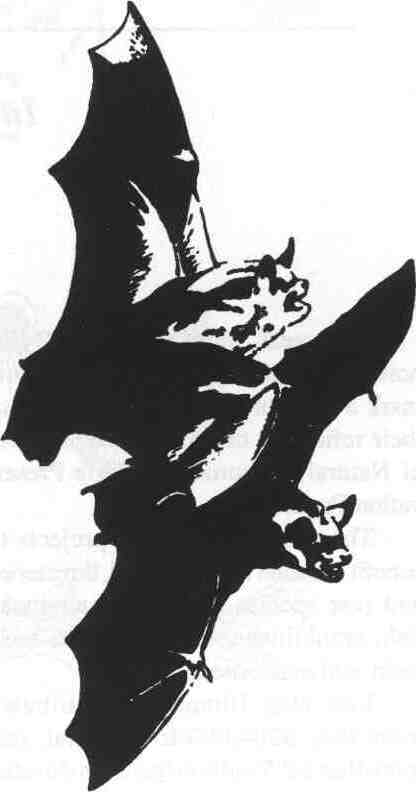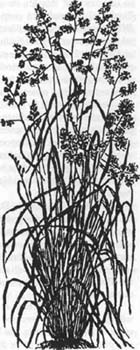
It's that Time of Year Again
Each year, more than 20,000 Illinoisans fill out their state income tax and mark a box donating all or a portion of their refund to the Illinois Department of Natural Resources' Wildlife Preservation Fund. The dollars go toward projects to benefit the state's endangered, threatened and rare species of plants, mammals, fish, amphibians, birds, reptiles, mollusks and even insects. Last year, Illinoisans contributed more than $204,000 to the fund, and more than $2.5 million has been donated to this worthwhile fund during the past 12 years. Those dollars have resulted in the completion of about 400 projects that might otherwise not have been undertaken. This year, eight major projects have already been approved for funding, obligating nearly $64,000 from the Wildlife Preservation Fund. • Because the 13,000-acre Savanna Army Depot is being closed, there is an outstanding conservation opportunity for the state. The site includes about 6,500 acres of Mississippi River backwater lakes, islands and bottomland forest, and supports populations of about 30 federal and state endangered species, including eagles, cormorants, bitterns river otter and bobcats. Complete and accurate information on the biodiversity values of the area do not exist, so a detailed natural community map of the area will be funded for $18,000 by the Wildlife Preservation Fund. • More than 350 areas have been added to Illinois' Natural Areas Inventory, and about 90 percent of these areas contain habitat for endangered species. The Wildlife Preservation Fund will spend $6,000 to update the Illinois Natural Areas Inventory to include these new sites. • As the macrosite concept gains broader acceptance, the number of acres being restored to prairies will continue to grow. The Wildlife Preservation Fund will spend $12,000 to investigate the genetic differences of the major prairie grasses used in restorations and evaluate the necessity of using local ecotypes in these restorations. • Using the Mackinaw River basin as a model, the Wildlife Preservation will spend $10,000 to develop a state- of-the-art methodology for managing Illinois streams using the ecosystem management approach. This is the sec- Illinois Parks & Recreation • January/February 1996 • 49 
ond year of a two-year study on the Mackinaw, one of Illinois' highest quality streams. • A Goose Lake Prairie State Park/Heidecke State Fish and Wildlife Area study will focus on assessing the number of deer that can be sustained on a restored prairie without damaging the prairie vegetation. This is a three-year study and $2,000 will be used for the first year of the project. The information gathered on deer damage to prairie vegetation will be useful in assessing vegetation recover times and preferred white-tailed deer population numbers for other prairie areas. • A study on the Joliet Arsenal and Prairie Parklands Macrosite will establish baseline data on grassland bird populations by comparing population numbers and pairing and reproductive success at four large grassland areas. The $6,000 from the Wildlife Preservation Fund will be used as a portion of a $93,000 grant awarded the Illinois Natural History Survey by the National Fish and Wildlife Foundation. The study will establish a long-term monitoring program; evaluate and compare the suitability of native prairie, restored prairie and non-prairie grasslands for grassland bird conservation efforts; evaluate the impacts of grassland bird abundance and productivity; assess the importance of woody vegetation in grassland areas; and evaluate the impacts of edges and adjacent croplands on grassland bird abundance and productivity. • The Savanna Army Depot has the largest remaining sand prairie in Illinois, and the Wildlife Preservation Fund will allot $2,200 for an inventory of invertebrates, keying in on butterflies and leaf hoppers. The survey will also study the effects of grazing and prescribed fire management. • The Wildlife Preservation Fund will spend $10,000 to purchase 25 river otters for release in Illinois. The 15 males and 10 females are part of the River Otter Recovery program.
Another 21 small projects have been approved for funding. These are projects costing $1,000 or less, and they will obligate another $20,000 from the fund. These include such diverse projects as: a vegetation inventory at Pistakee and Volo bogs, a study of the distribution of the copperbelly water snake, the distribution of scorpions in Illinois, a site inventory of Chauncey Marsh, the productivity of warblers along the Cache River, a survey of timber rattlesnakes in the Witkowsky Wildlife Area, a survey on clubshell mussels in the Vermilion River, the distribution of exotic zooplankton in Illinois, and others. There will be five funds vying for taxpayers' dollars on this year's Illinois tax form. All are worthwhile, and all benefit a different segment of society, such as cancer and Alzheimer's disease research, the homeless and child abuse prevention. In fact, the Wildlife Preservation Fund is the only fund that doesn't directly benefit humans. But the truth is, we are the real benefactors of the Wildlife Preservation Fund. Make a donation on line 15a of the IL-1040 form or line 7a on the IL-1040- EZ form. The dollars you donate to the Wildlife Preservation Fund will be added to the amount you owe or subtracted from your refund. Your donation is tax deductible. You can also make a direct donation to the fund by mailing a check or money order made out to Wildlife Preservation Fund to the Department of Natural Resources, Division of Natural Heritage, 524 S. Second Street, Springfield, IL 62701-1787. 50 • Illinois Parks & Recreation • January/February 1996 |
||||||||||||||

